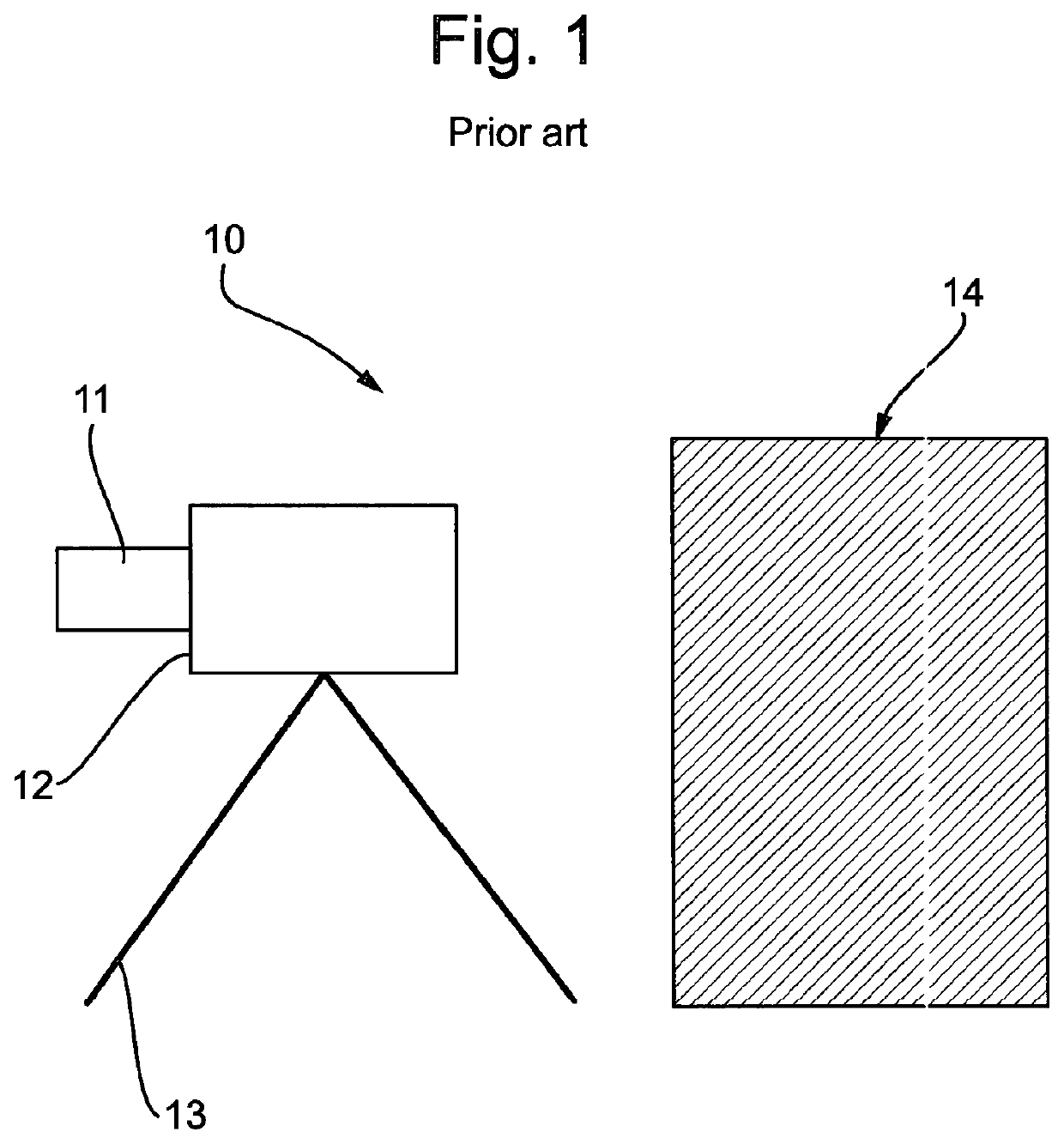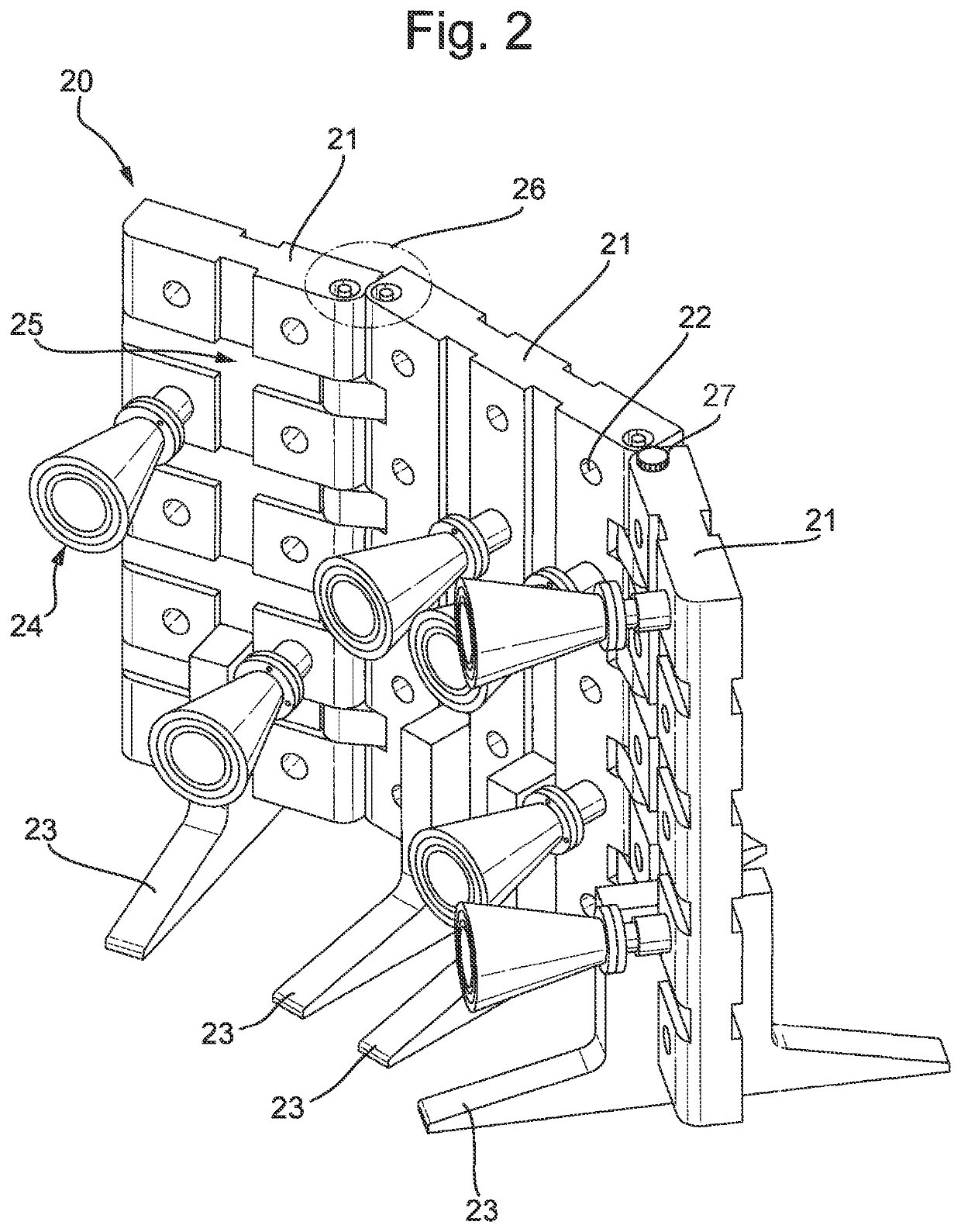Firing stand for shaped charges
a technology of charging stand and charging stand, which is applied in the direction of explosive charges, fluid removal, borehole/well accessories, etc., can solve the problems of difficult to achieve precise precision and significant burden on the precise deployment of the firing stand of the disruptor system, and achieve the effect of improving stability and great stability of the mounting panel
- Summary
- Abstract
- Description
- Claims
- Application Information
AI Technical Summary
Benefits of technology
Problems solved by technology
Method used
Image
Examples
Embodiment Construction
[0026]FIG. 1 shows an illustration of a prior art disruptor system 10 being aimed towards an improvised explosive device 14. The prior art disruptor system comprises a single shaped charge 12, detonator 11 and a firing stand 13. The firing stand 13 is for illustrative purposes only and practically may comprise more legs supporting shaped charge 12. The shaped charge 12 is orientated towards explosive device 14 such that when detonator 11 detonates shaped charge 12, the shaped charge jet (not shown) propagates towards explosive device 14. The shaped charge jet subsequently penetrates explosive device 14 and damages internal components so as to prevent detonation of device 14. This illustration shows the capability of the prior art to only fire a single shaped charge 12. The single shaped charge 12 delivering a disruptive effect to explosive device 14 along the direction of penetration of the respective shaped charge jet. For explosive devices 14 wherein the internal contents, or the ...
PUM
 Login to View More
Login to View More Abstract
Description
Claims
Application Information
 Login to View More
Login to View More - R&D
- Intellectual Property
- Life Sciences
- Materials
- Tech Scout
- Unparalleled Data Quality
- Higher Quality Content
- 60% Fewer Hallucinations
Browse by: Latest US Patents, China's latest patents, Technical Efficacy Thesaurus, Application Domain, Technology Topic, Popular Technical Reports.
© 2025 PatSnap. All rights reserved.Legal|Privacy policy|Modern Slavery Act Transparency Statement|Sitemap|About US| Contact US: help@patsnap.com



